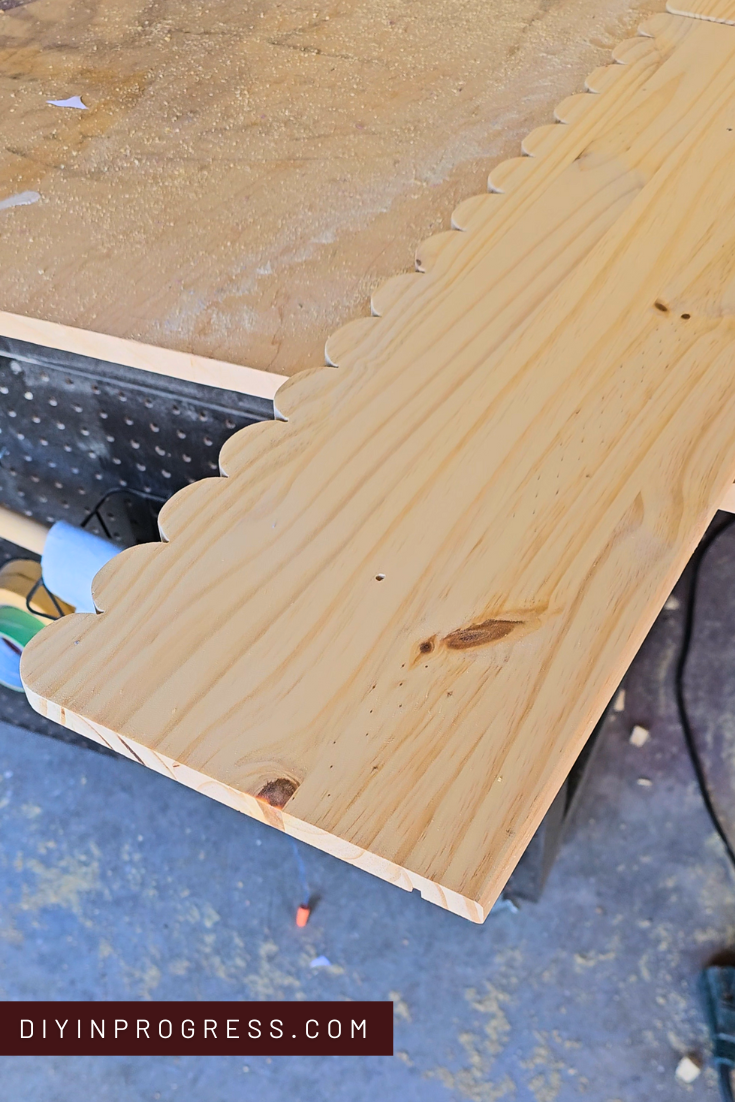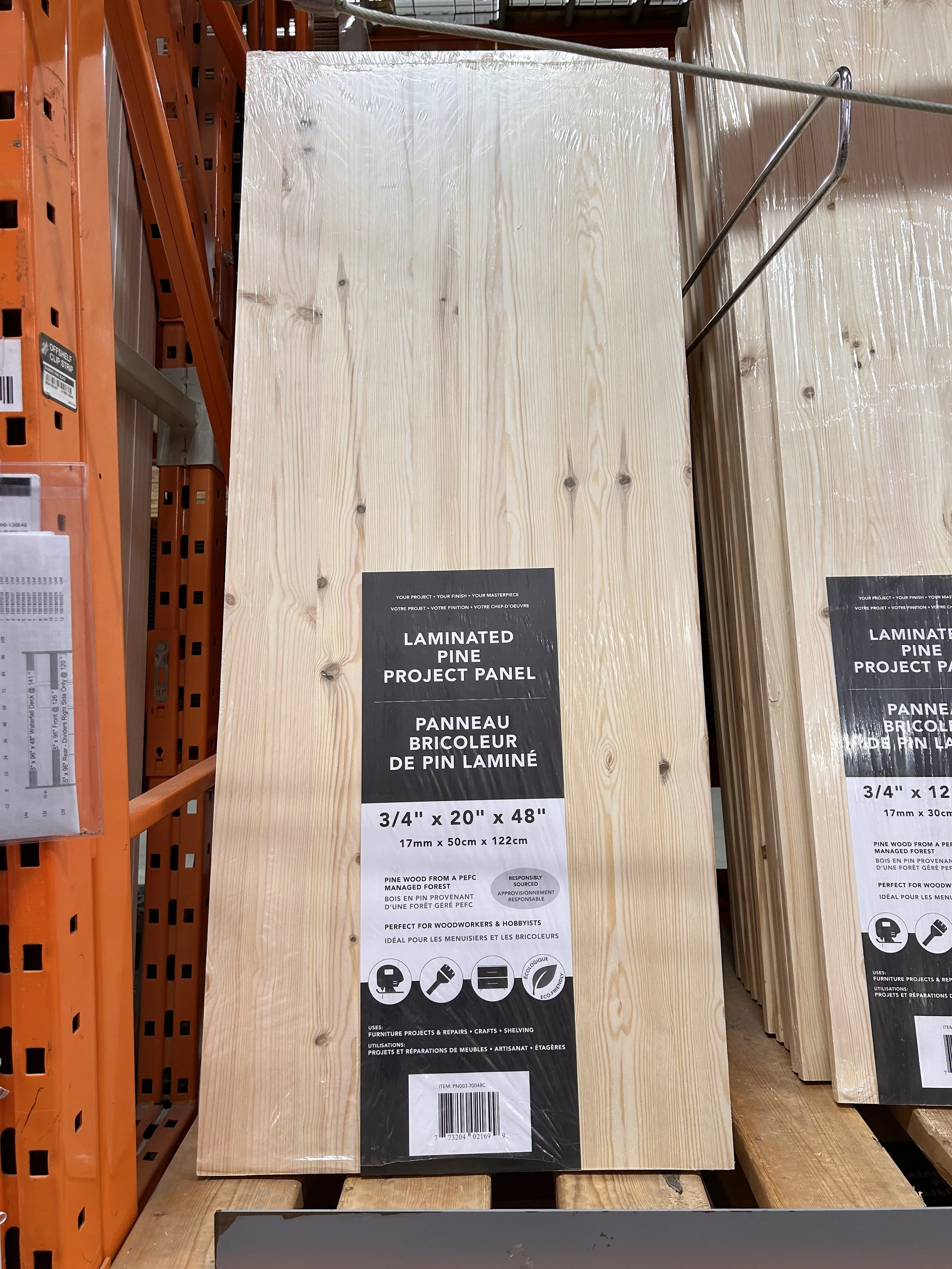DIY Furniture Hack: Laminated Pine and How to Use It
Image from HomeDepot.Ca
Today I’m going to talk about a must-have for any DIY furniture hacker: laminated pine! I use this product all the time, whether I’m crafting from scratch, duping a piece of expensive furniture for cheaper, or repairing a piece of furniture for a thrift flip transformation. Come learn all about this product and why I love it, and see a few of my laminate pine projects I’ve done along the way!
What is laminated pine?
Let’s start with a simple explanation of this wood product that is so handy for amateur woodworkers. Laminated pine refers to a wood product that is made up of smaller pieces of pine that have been laminated (glued) together side by side. Sometimes called hobby board at places like Home Depot, this wood comes pre-sanded with finished edges in many different lengths and widths. This makes it perfect for the DIYer at home who may not have all the tools, space, and time that would be necessary to produce a ready-to-use piece of project wood. You can find it on the shelf wrapped in plastic and ready to go!
IKEA: Laminated Pine Retailer Extraordinaire
Just in case you need convincing that laminated pine can or should be used for building, let’s remember IKEA! A lot of their furniture (including the TARVA dresser that I hacked for an inexpensive dupe!) is built from laminated pine. This makes their furniture more affordable and it definitely makes it easier to cut and hack than other building materials would be. If IKEA can do it, why can’t we?
IKEA isn’t the only one out there using laminated pine/hobby board for a whole bunch of things. Here’s what I personally use this wood product for.
Small wood craft projects
Sometimes you just need a small piece of smooth, professionally finished wood as a base for your crafty purposes. Like this sign I made for my greenhouse with my Cricut Maker! This wood comes ready to take stain or paint and does not require sanding. It’s perfect for any Cricut project you have in mind.
Altering existing furniture
Sometimes when you are repairing or flipping furniture, you need to make some structural or aesthetic changes that require a finished piece of wood. Laminated pine is such a great option in this case! Like when I used a piece of hobby board and some veneer to create new tops for my bedside table flip project. I love not having to buy an expensive piece of wood or create a finished-look board from scratch when I’m fixing or altering furniture.
Duping furniture designs
While building from scratch with pine board might be a faux pas in the actual carpentry world, in the DIY world it is fair game! We know how to make any kind of wood look beautiful, so taking the easy way as a base to work from is totally fine in my books. I used some 1x6 knotty pine boards to create this beautiful headboard piece that was inspired by a banister I admired online, and because I finished it beautifully no one will ever realize I used the cheapest wood available (unless they read my blog, of course!).
Why do I like laminated pine?
I think I’ve made my reasons for loving laminated pine pretty clear so far! Here they are summed up:
It’s affordable
It’s finished and professional-looking
It comes ready to work with
You can buy it in different lengths and widths to make it easy for any project
It’s perfect for working with IKEA projects that are made from laminated pine already
What are the drawbacks to using laminated pine?
While I do believe laminated pine has its place in the DIY world, it’s not perfect for every project.
It cannot be used for exterior projects (in most cases, use pressure treated wood for those).
It is soft and can dent easily. So, it might not work best for high traffic pieces that see a lot of wear and tear.
It does not have the same natural look as solid wood (sometimes you can see the grain changes where two boards are glued side by side).
When you add it to a project made of a different wood (say maple or oak), it won’t take stain the same way.
Because of the way it’s manufactured, it can be difficult to get stain to go on evenly and without blotchiness.
Can You Paint Laminated Pine?
None of the reasons I gave above are enough to make me shy away from using hobby board for many of my projects. And let me tell you why: Most of them disappear when you finish these boards properly. With the right staining/painting technique, it is possible to:
Make hobby board look like solid wood
Make it match the different types of wood around it
Prevent the blotchy spots of death so common with laminated pine
Want to know this superpower painting technique? I talk about it right here, including what products to use and step-by-step instructions for a perfect laminated pine finish, every time. Don’t let the final step of staining be the reason you shy away from this versatile building material! Try it, you won’t regret it.
So there you have it, all the reasons I love me a good piece of laminated pine for almost any interior DIY furniture or crafting adventure. Did I convince you? Will you use laminated pine for your next project? Let me know your thoughts in the comments or tag me @diydanie with your hobby board creations.






